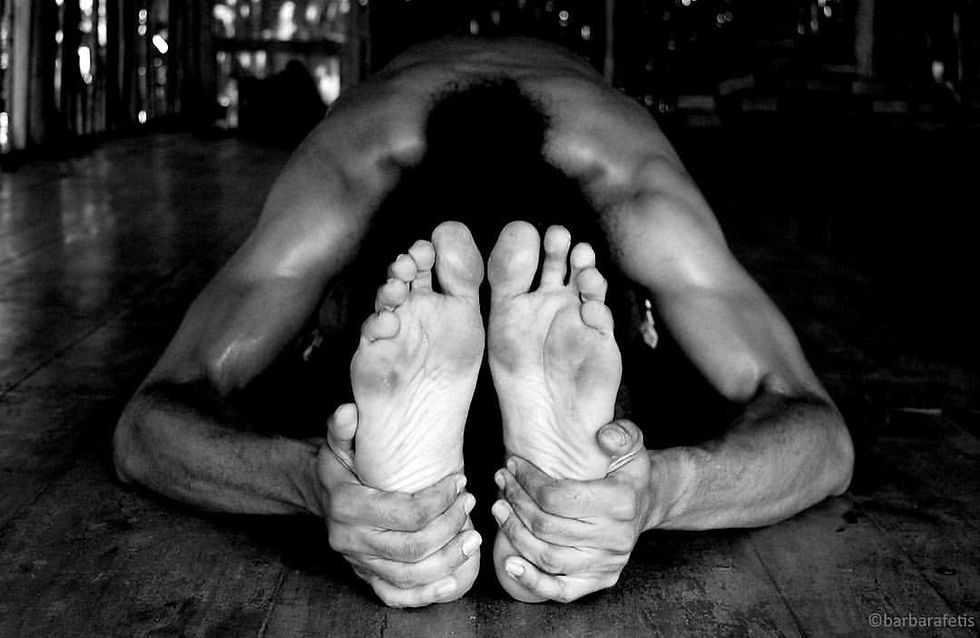Symbolism of Feet in Hinduism and Yoga.
- Jose Velez
- Oct 11, 2017
- 2 min read

Feet hold powerful symbolism within Hindu culture. You take off your shoes when you enter a temple. Sitting in a temple you never point your feet towards the altar or other worshippers, especially seniors. The feet of people are considered low. In fact, one of the greatest insults you can make is to throw shoes at someone. And yet the feet of God are special. God’s feet are often called “lotus feet” and in some temples even a small set of symbolic shoes representing the feet of the Deity is touched to the head of worshippers as a blessing. This blessing implement is called a shathari. Worshippers even drink the feet-bathing water of God as a prasada. This is called charanamrita or charnam for short.
The basis for feet symbolism goes back to the Vedic conception of the universe as the body of God. Just like a body has high and low parts so this universe has high and low, pure and impure places. Up is high, down is low. Feet touch the ground, which is low, and so when you enter a temple you leave your low part at the door. We take off our impure part, our feet, symbolized by leaving our shoes at the door as we enter sacred space. You might say we leave our materialistic side at the door when we enter spiritual space.
Why do we not touch papers, books and people with the feet?
Along with this question one might also add ask: Why do we not blow out a flame with our breath? The answer to both these questions has to do with one of the most fundamental features of Hinduism, namely personification.
Hinduism personifies virtually every aspect of life. The wind is not just air blowing from high pressure to low pressure. It is a god, Vayudeva. The sun is not just a great nuclear reaction in space. It is the sun god, Suryadeva. Similarly, the rain is a god, the moon is a god, all the planets are gods and every other aspect of reality is subject to personification. Therefore, all things of learning: papers, books, musical instruments, pens, typewriters and even computers can be seen as an aspects of the Goddess of learning, Saraswati Devi.
So always have these in mind when interacting with any aspects of the hindi culture. Picture by Barbara Fetis

Student of the KPJAYI, Jose Luis Velez has practiced Ashtanga Yoga since 2008 and has been studying under the guidance of R. Saraswathi Jois since 2016. He has studied Yoga Philosophy and Sanskrit in Mysore, India with teachers like Lakshmish Bhat at the KPJAYI and Vidvan Prof H.V. Nagaraja Rao from the Mysore University and the Maharaja's Sanskrit College. He has also studied Ayurveda with the Vaidya Nixia Lino and Ayurvedic Massage at Suyoga Ayurvedic Massage Center in Mysore. Jose travels yearly to Mysore, India, to study, reconnect and learn directly from the source.

































Comments